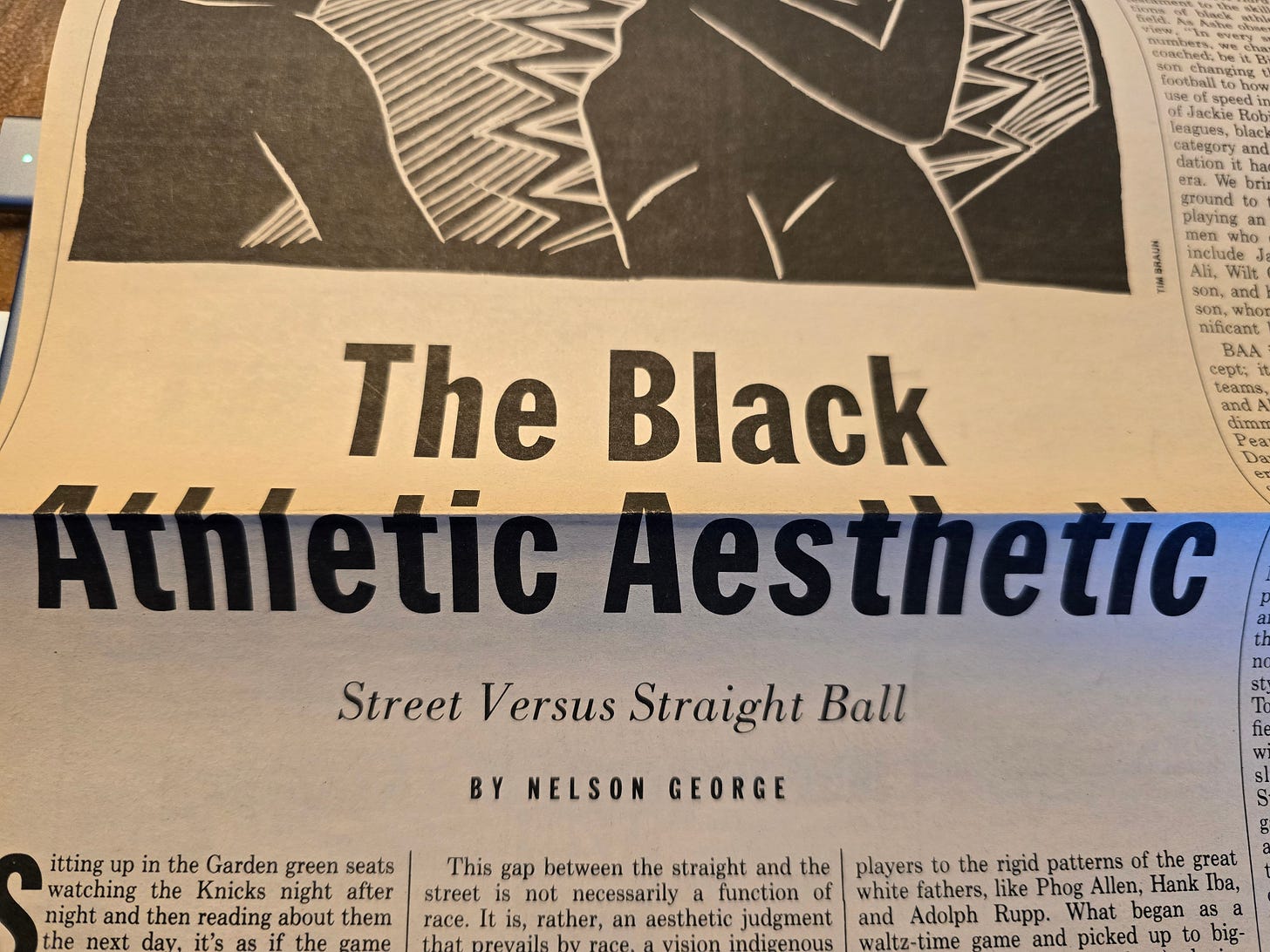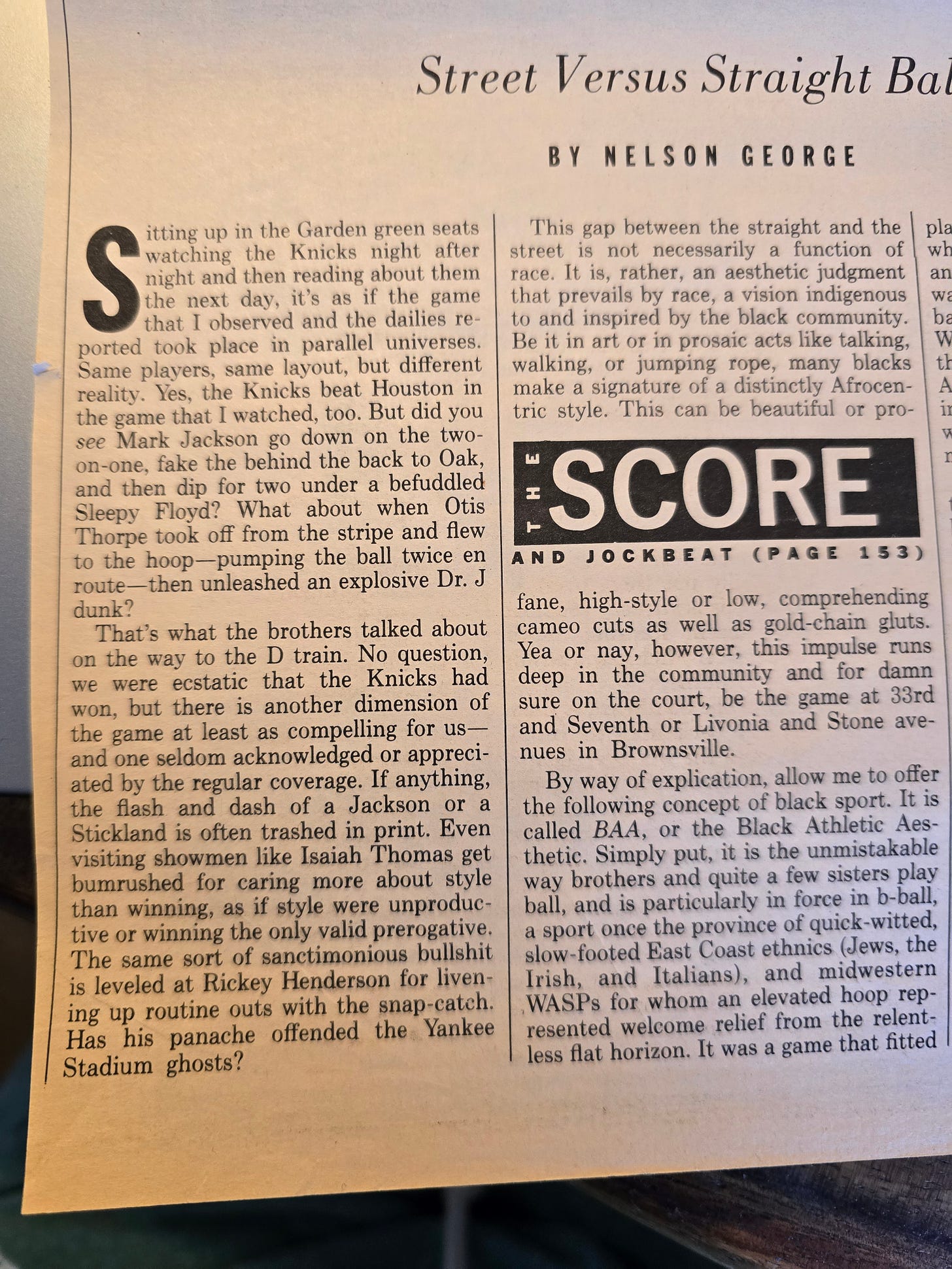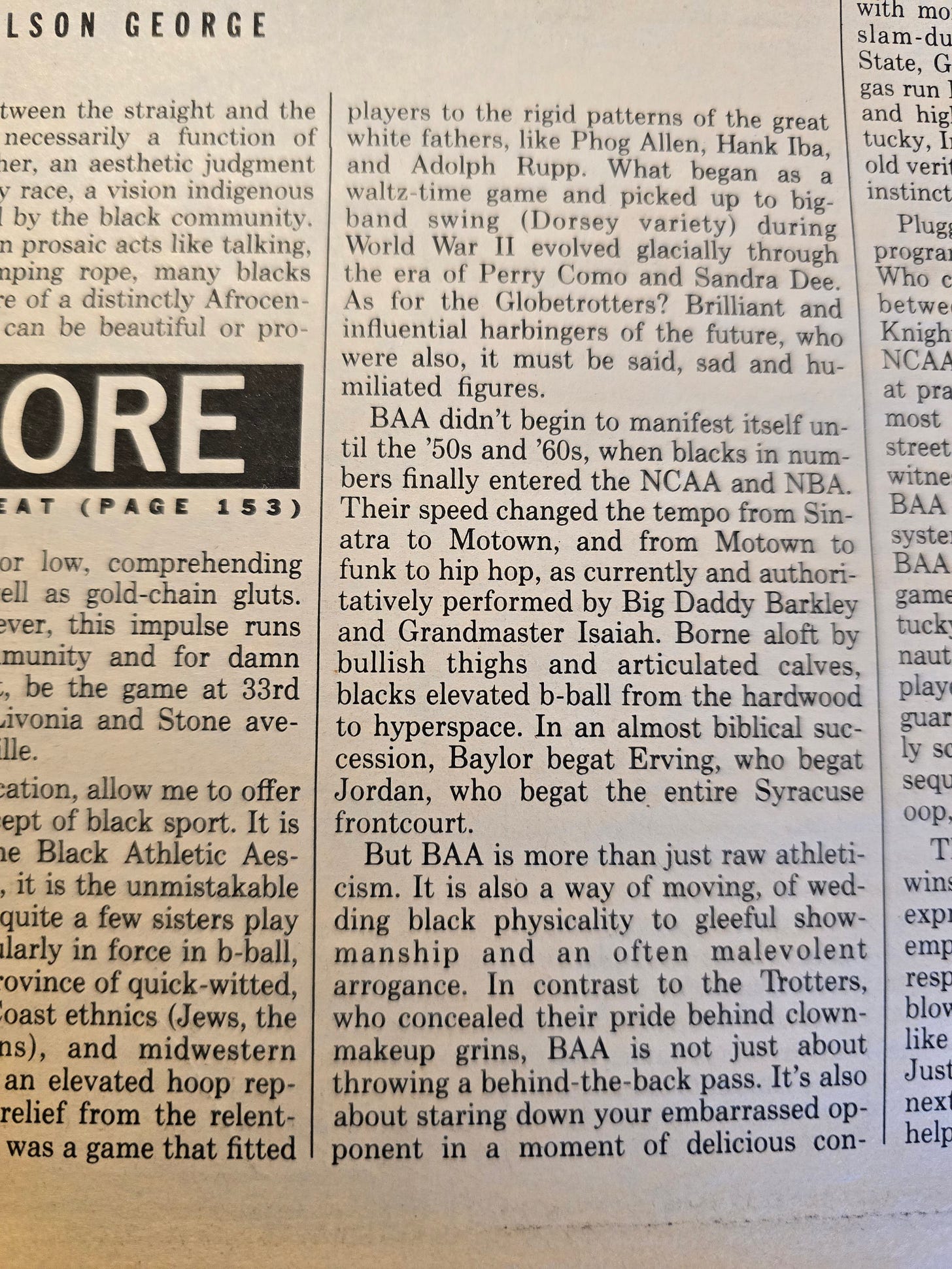Our national return to an era when the United States government is a daily argument for intolerance now collides with a unifying national event that features black excellence (aka NCAA’s March Madness basketball tournament) made me recall an idea I pursued in the pages of the Village Voice way back in March 1989. I titled the concept the Black Athletic Aeesthetic, which was an attempt to synthesize the sensibility of black athletes in the way I did as a matter of course in music and dance. I’d write a whole book, Elevating the Games, that turned a music critic’s ear and eye towards a game defined by rhythm (dribbling), dance (footwork) and cutting contest/cyphers (trash talk).
In many respects the Black Athletic Aesthetic now reigns supreme. No ESPN today’s top plays highlight package is without a high flying, death defying, crowd rocking dunk. The swagger that was typical of “street ball” is now used to make athletes into marketable brands that influence consumption of clothes, cars and commodities of all shapes and sizes. With NIL (Name Image and Likeness) money available high school kids can enter college with six figures incomes guaranteed. The days of poor black prodigy eating Burger King while colleges sell his jersey for $50 a pop are over.
But the dark forces in D.C. who are using the withholding of government funding to blackmail colleges, cultural institutions and corporations into erasing DEI programs surely aren’t comfortable with how black asethetics have become all-American. People who want to erase the history of black military heroism (and Latino and Asian and women) definitely have plans for white washing sports.
So, in the spirit of black athletic exceptionalism and with an eye towards March Madness (I’m proud St. John’s University alumnus), I often this thowback that remains one of my favorite essays.









